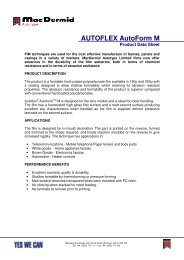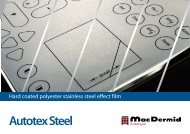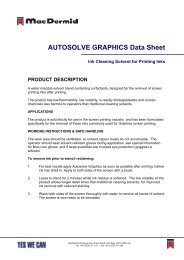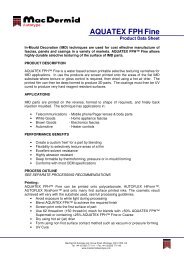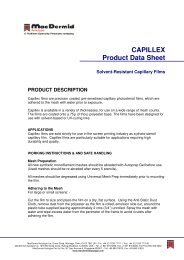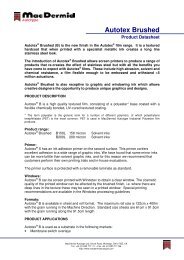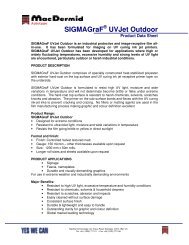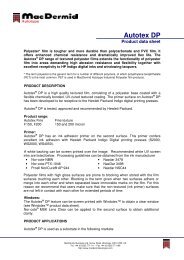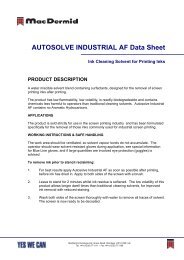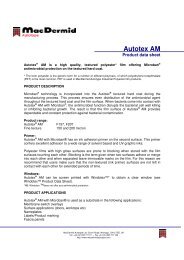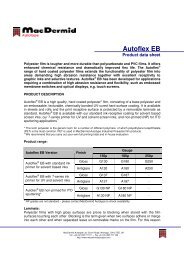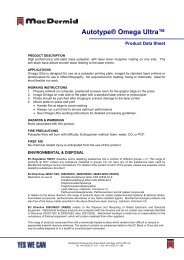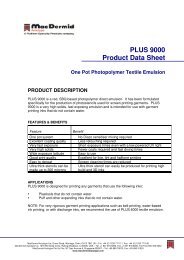Screen E-Book (.PDF) - MacDermid Autotype
Screen E-Book (.PDF) - MacDermid Autotype
Screen E-Book (.PDF) - MacDermid Autotype
- No tags were found...
You also want an ePaper? Increase the reach of your titles
YUMPU automatically turns print PDFs into web optimized ePapers that Google loves.
If you are seeing this moiré on a regularbasis, you need simply to attend to the finedetails. Get a better set of screens fromyour RIP (you might have to change yoursupplier or your RIP as there have been asteady stream of improvements to screensets over recent years). Some theoreticalanalyses suggest that you can create rosettesthat are intrinsically stable to smallchanges. If your RIP offers such a choice,it’s worth a try.Invest in improved registration control (orbetter staff). And there’s no excuse for notkeeping your meshes under good tensioncontrol. Modern stretching machines(combined with modern mesh fabrics) cangive you great uniformity over large areasand over large time scales. If you’re notgetting this, then change your supplier ofstretched screens.Once again I’m in disagreement withthose who worry about the fine details ofmeshes in relation to this type of moiré.Of course a very low tension mesh and ahigh snap-off (off-contact) will give largedistortions which will make unstable rosettemoiré worse. But if you are this bada printer, you will have many worse thingsto worry about. As long as you have reasonablygood control over your mesh anywavy moiré you see will most likely be dueto spreading transfer (see below). This is affectedby bad control of your mesh, snapoffand squeegee pressure so my disagreementis about the cause of such moiré, notits cure!Although I have no direct evidence to supportthis assertion, I am also confident thatthe amplitude of unstable rosette moirécan be reduced by reducing dot-on-doteffects. So for a third time, the virtuouscombination of fine mesh and low EOMlow Rz stencil will help you reduce moiré.Other causes and pseudo-moirésMark Coudray helpfully pointed out thatcorrugated substrates can cause moiré.If your substrate has a regular frequencyclose to that of your screens, you will seesome horrible effects. Because it’s so easilydiagnosed by printing onto a sheet ofknown smoothness, I’ll not discuss it further.The mesh will leave regular patterns onyour 100% solids and can look quite uglywith coarse meshes and viscous inks. Thisisn’t a moiré, nor should it be a problem ifyour mesh frequency is significantly higherthan your lpi. Thinner thread diametersand lower viscosity inks can help reducemesh marking. See the optional theorysection on mesh marking for a fuller discussion.Skipping (puppy paws) – the effect that hassometimes been erroneously described asthread eclipsure – is always very ugly. Whenlooking for moiré in various prints I’ve seen‘ugly’ effects that haven’t been a typicalmoiré but most people would describe itas a moiré. In each case, an inspection witha microscope shows that there’s skipping.119



